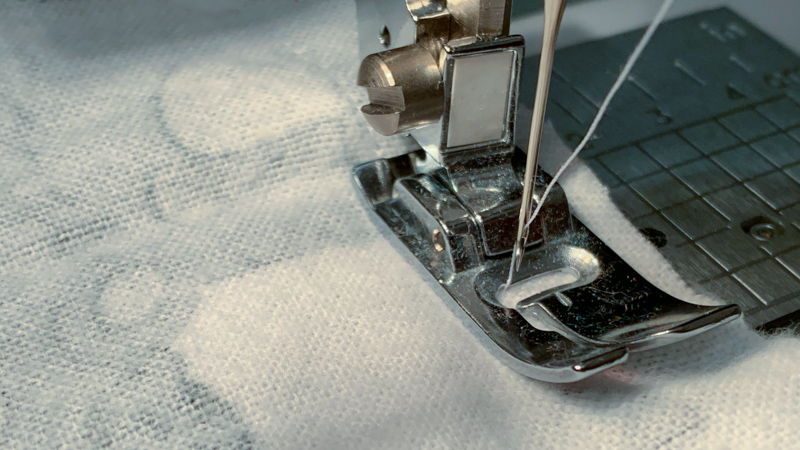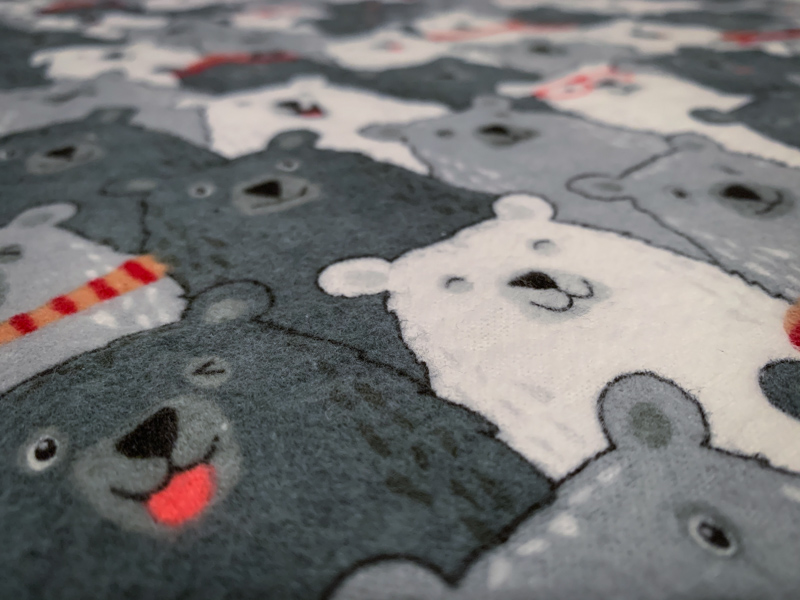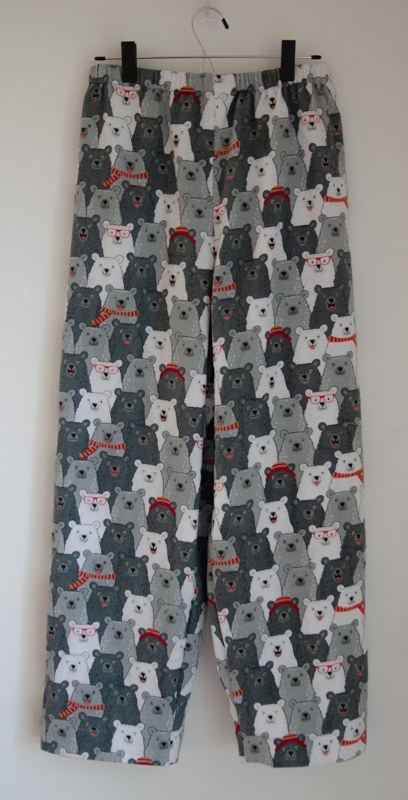Pandemic Projects: Sewing Pajama Pants
With many businesses and locations still shut down, projects at home are a good way to keep busy. While most of the posts on this blog revolve around electronics, information security, and machine learning (or on rare occasions rocket launch pictures), my most recent endeavor is in a new area: sewing. Specifically, sewing pajama pants, which as I understand it is to sewing what “Hello World” is to programming. If you enjoy the other topics on this blog, then maybe consider giving sewing a shot—it’s actually quite fun seeing something wearable coming together (and wearing it, of course).

As a first prerequisite, we have a sewing machine at the house. My wife took some sewing classes before for a cosplay project, and she worked most recently on a space dress one. You can read more about that on her blog. I’ve dabbled with the machine before for small fixes—if you are curious, there are a ton of videos on YouTube that explain the basics for newbies.

To get started with the pajamas, a couple of supplies are needed. First, you need to decide on a design, and the easiest route for that is to use a pre-made pattern. I bought the “Simplicity 8022” pattern a while back. It’s a simple pattern for pajama-style pants that just requires sewing together two pieces of fabric. Second, obviously some fabric is needed. I used the bear-patterned fabric pictured above. Why bears? Well, they look appropriate for pajamas, bears are our state animal, and I generally like the cartoon variety of bears (I am trying to stay away from the real-world kind). Third, the pattern requires elastic for the waist. It also requires some tape to be tied in the front in a loop, which I left out since it appears to be mostly an ornamental addition from what I can glean from the pattern. Lastly, to no surprise, some thread is needed as well.

The procedure roughly works as follows. Put the pattern on top of your fabric, pin it in place, and cut out the pieces of fabric needed (just two for the pattern I used). Then follow the instructions to sew the pieces together, create a casing for the elastic at the waist, and hem the pants. The challenge with this: the instructions are terrible. My wife helped with the sewing jargon, but some of the steps were just befuddling to both of us (as engineers, we have an expectation for precise and accurate datasheets). For example, the instructions ask to press (fold over and iron) 1 ⅛” of fabric for the casing for the elastic band at the waist. Then, you are supposed to press another ¼” of fabric at the raw edge (basically, fold the fabric over again where it was cut so that the cut isn’t visible). As it turns out, you need to accommodate for that extra ¼” for the first fold (i.e. make it 1 ⅜”) to allow for enough space for the required 1”-wide elastic band. We might not be aware of some conventions for those instructions, but either way there are certainly clearer ways to avoid confusion. In the case of pajama pants, the purpose of all seams is fairly clear, so working back from intent to interpret the instructions tends to work.

The final product is in the picture above. The main lesson learned: don’t obsess on getting everything perfectly straight at the beginning. The remainder of the process will introduce some “character” anyways, especially when you’re a beginner. The pants are comfortable; one regret: they don’t have pockets. That’ll be a challenge for another time.
Subscribe via RSS